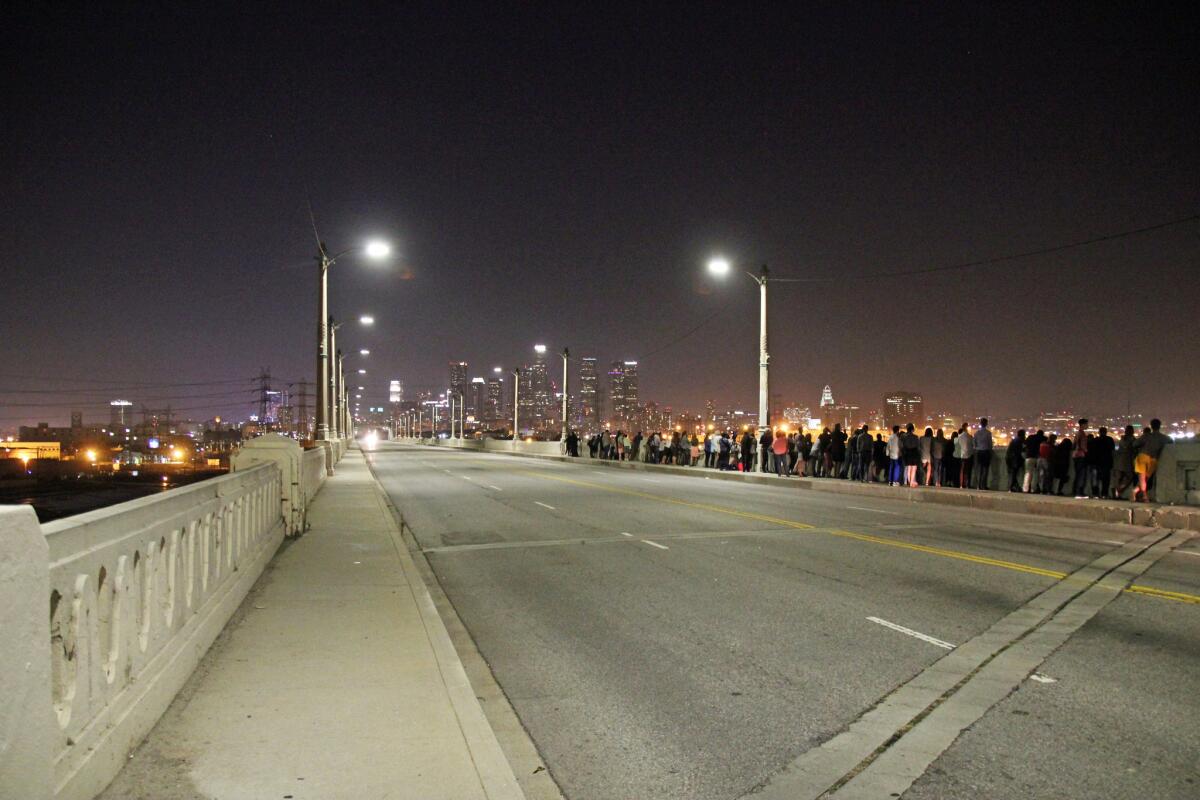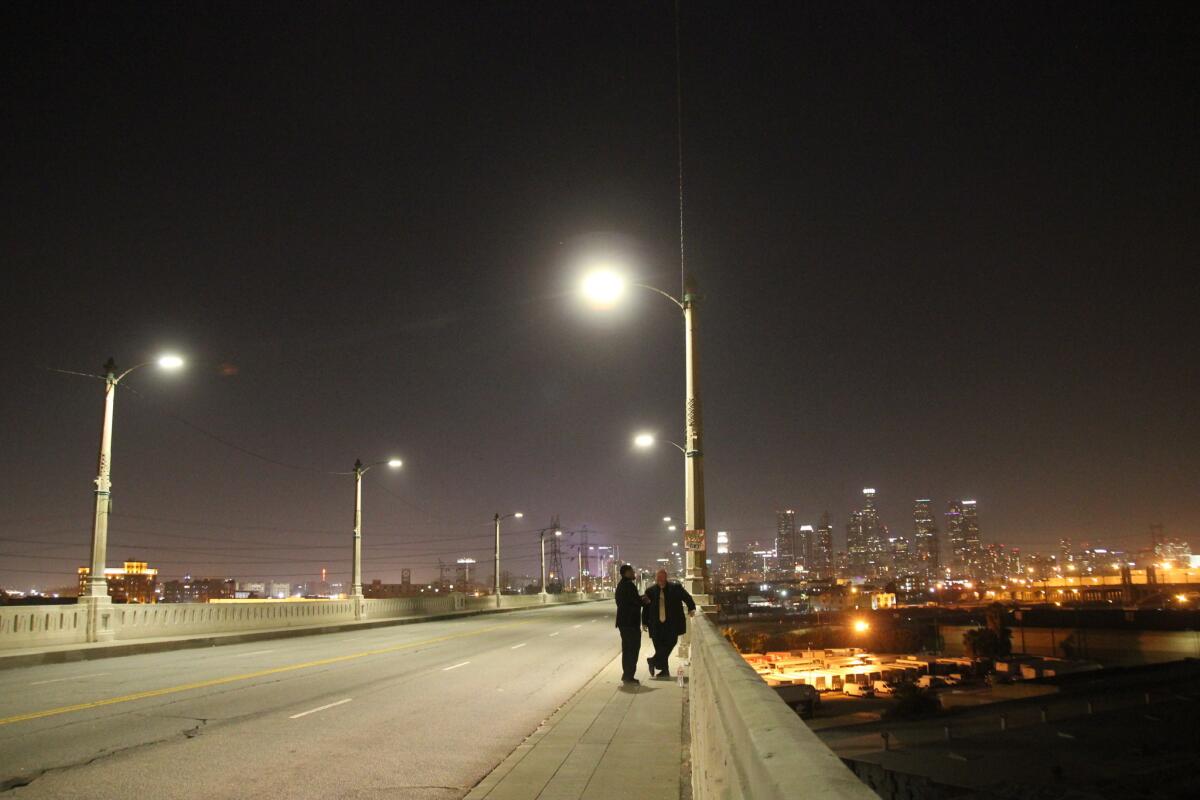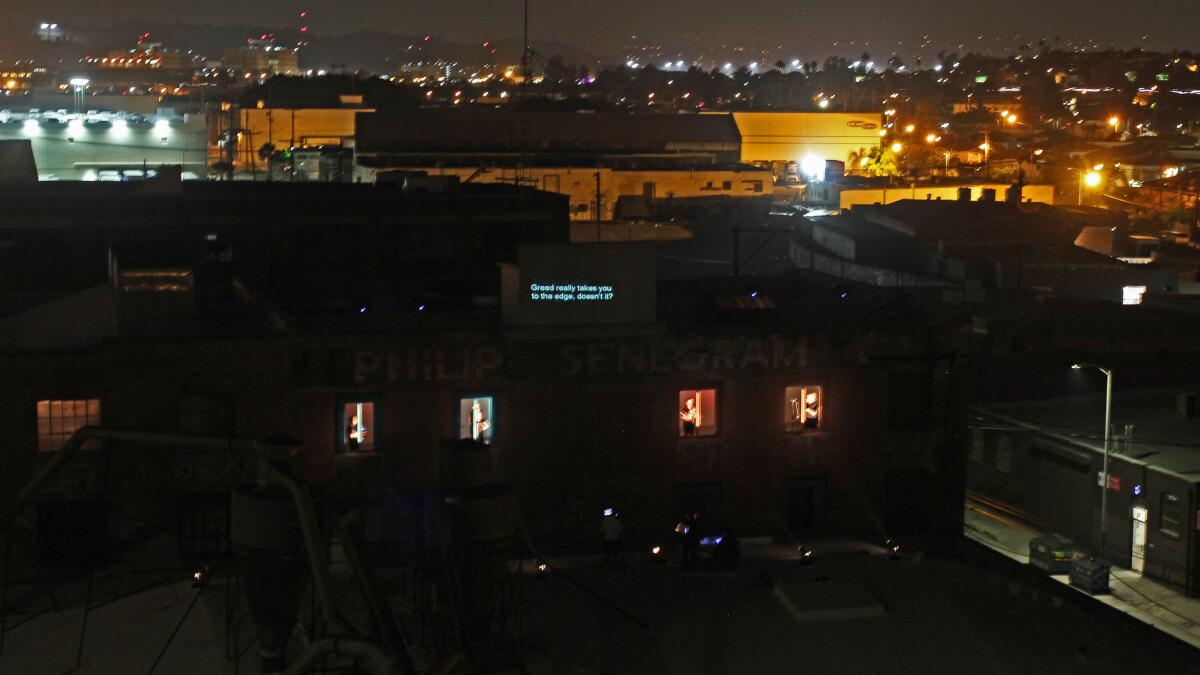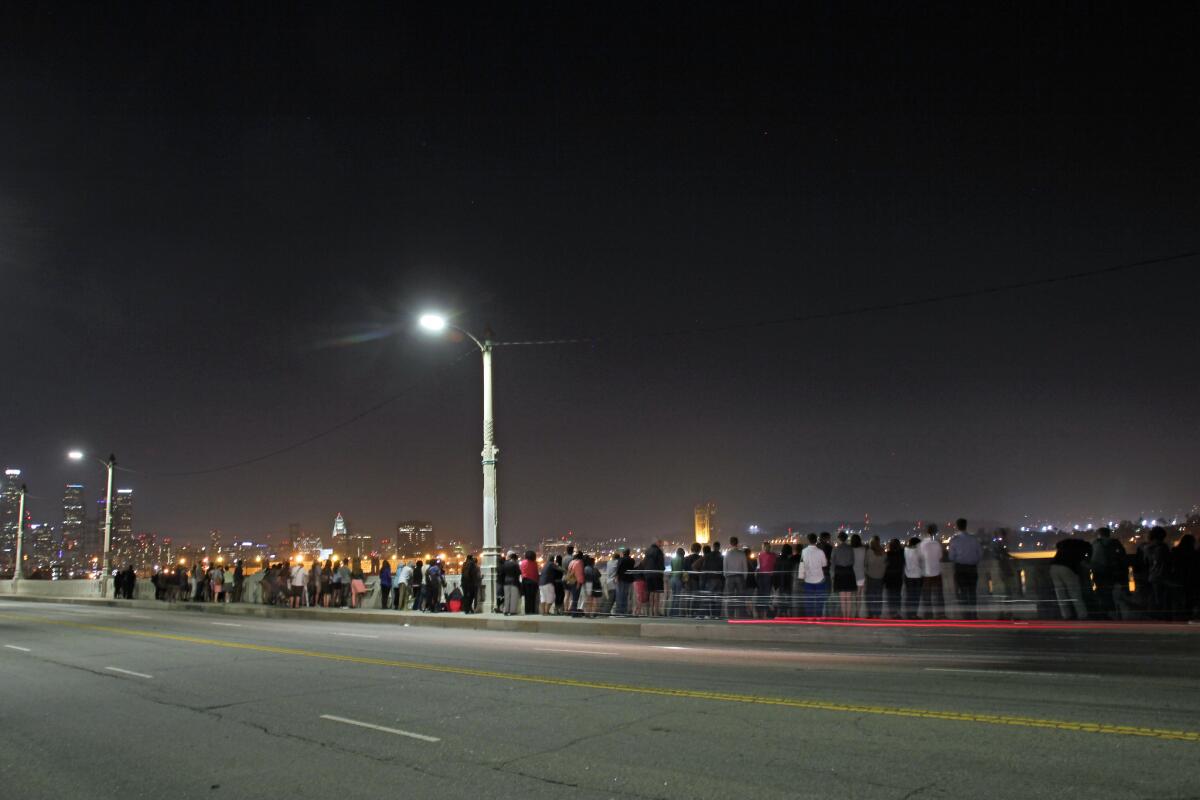Video: Saying goodbye to the 6th Street Bridge with artist Susan Silton’s ‘Sublime Madness’ opera

People gathered on L.A.’s 6th Street Bridge last summer to watch ‘A Sublime Madness in the Soul,’ a rooftop opera by artist Susan Silton and composer Juliana Snapper.
For several months, Los Angeles has been bidding goodbye to the 6th Street Bridge. There have been street parties, art exhibitions and cruising flotillas of custom cars, all in advance of the bridge’s demolition and reconstruction, which is set to begin this week.
Which makes this a good time to revisit a performance organized by artist Susan Silton on the bridge late last summer. “A Sublime Madness in the Soul” was a four-part opera that the artist staged in the windows of her studio with the assistance of composer and opera singer Juliana Snapper — visible to anyone walking or cycling along the 6th Street Bridge.
The piece existed for exactly two performances, held over the course of a single balmy evening in August. Thankfully, the artist recently uploaded a series of video excerpts to her Vimeo account (embedded below), making it possible to see and hear what went down.
The opera, says Silton, was inspired by “a perfect storm of events” in the industrial slice of Boyle Heights where she kept her studio — a combination of gallery boom, real estate speculation and the decision to demolish one of L.A.’s most iconic pieces of transportation infrastructure. (The 6th Street Bridge has appeared in everything from a pair of “Terminator” flicks to a video by Kanye West.)
“When my building was sold last year, I started to see the writing on the wall,” Silton says. (The artist has since moved on to another space.) “Many of the people I’d known had left and the impending bridge demolition was going to be insane. ... I was looking out my windows one day and I looked out onto the bridge and it looked stunning and I thought, ‘I need to make a piece about this.’”
Thus “A Sublime Madness” was born, its title taken from a concept by theologian Reinhold Niebuhr, who once wrote that a certain “sublime madness” is required to do battle against the forces of injustice.

A pair of men look over the site where artist Susan Silton staged her opera, ‘A Sublime Madness in the Soul.’
Silton created a libretto — much of it devoted to the topic of money and greed — that was harvested from the dialogue in movies such as “Wolf of Wall Street” “Boiler Room” and “The Color of Money.”
“The entire neighborhood had been so inundated with film,” explains the artist, “and there is such a legacy in the cinematic of dealing with these issues of power, greed and money.”
Silton then enlisted the assistance of Snapper who devised an improvised score for the libretto. The pair then brought on three additional singers — Tiffany Guerrero, Eric Castro and Judith Weisberg — who performed the work in full view of the bridge from the windows of Silton’s studio. The singers were lit and their performances amplified, so that they could be seen from the bridge and heard throughout the Boyle Heights industrial zone. Their lyrics were projected to a billboard just overhead.

Opera singers perform ‘A Sublime Madness in the Soul’ from Susan Silton’s studio building in August.
Dozens of spectators — many of whom had been alerted by the performance via email or social media; others who happened into it — stood on the north side of bridge to watch the performance unfurl in the windows of the old brick industrial building.
And so, for roughly a half hour at a time, on a warm Saturday evening, the operatic voices of Snapper and her colleagues wafted over industrial warehouses and the concrete expanse of the L.A. River.
“I drive a Ferrari 355 Cabriolet,” sang Snapper at one point, quoting Ben Affleck’s testosterone-fueled monologue in “Boiler Room.” “I have a ridiculous house on the South Fork. I have every toy you could possibly imagine. And best of all, kids, I am liquid.”
It was an unforgettable juxtaposition of crude text and sweet voice.

Cars cruise past the crowd that gathered to watch Susan Silton’s ‘A Sublime Madness in the Soul’ last August.
Being outdoors also meant that the performance was subject to the elements. The glittering towers of downtown served as backdrop. In the distance, a klieg light brushed the sky. And on several occasions, squadrons of dressed-up custom lowriders roared past as they cruised and bounced along the bridge. (The bridge has long been an important cruising site.)
“I was so thrilled when that happened,” says Silton. “I feel as if the presence of the car clubs entirely supported the piece itself. It was its own statement about the same exact thing — and I felt that they supported each other almost unintentionally.”
For now, there are no immediate plan to restage the opera. But there is the freshly released set of videos — an artist’s goodbye to L.A.’s eight-decade-old bridge.
For a taste of the performance — lowriders and all — see the videos below:



Find me on Twitter @cmonstah.
More to Read
The biggest entertainment stories
Get our big stories about Hollywood, film, television, music, arts, culture and more right in your inbox as soon as they publish.
You may occasionally receive promotional content from the Los Angeles Times.











